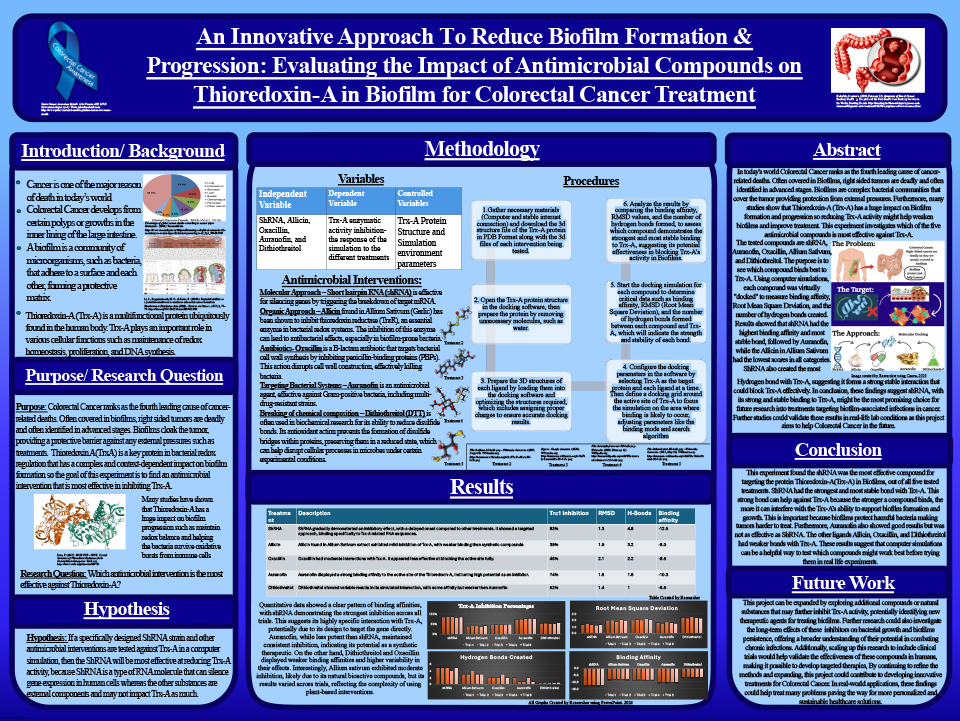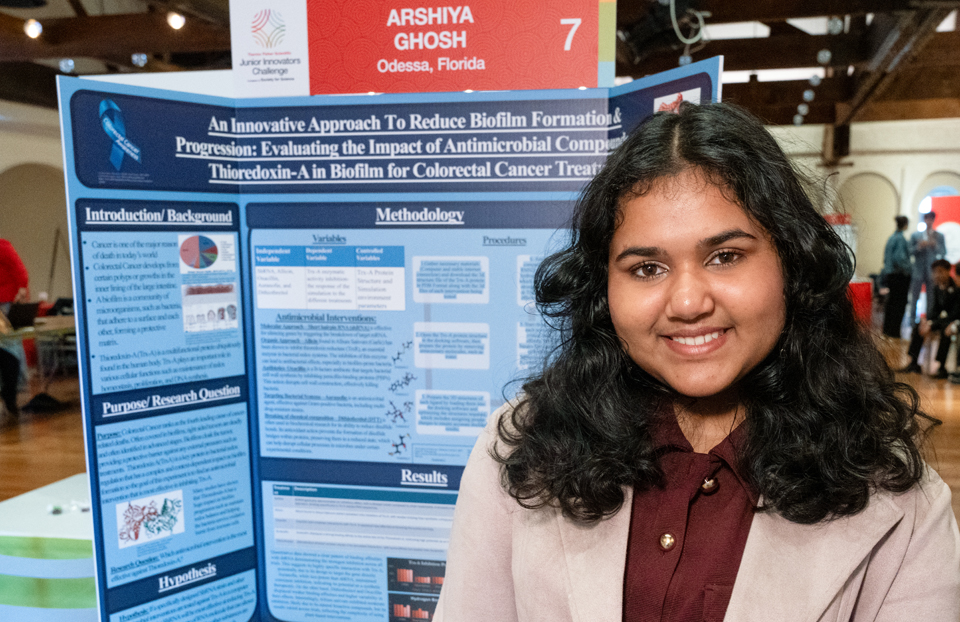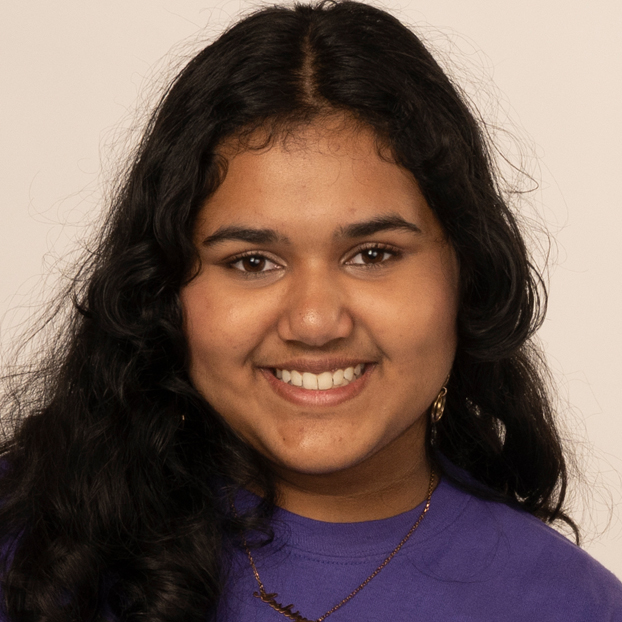Arshiya Ghosh
7th Grade, Starkey Ranch K-8 School
Odessa, FL
An Innovative Approach To Reduce Biofilm Formation & Progression: Evaluating the Impact of Antimicrobial Compounds on Thioredoxin-A in Biofilm for Colorectal Cancer Treatment
View Poster
Project Background
Arshiya wants to become an oncologist. “Cancer is one of the most devastating challenges in our world, and I knew I wanted to contribute to the fight against it,” she says. She is especially interested in colorectal cancer, the fourth most common kind of cancer in the US. Cancer in the colon is more complicated because of the microbes that also live there. Arshiya worried that these complex bacterial communities – what Arshiya describes as biofilms – could “act as a shield, making treatments less effective.” She decided to test ways to break down this biofilm.
Tactics and Results
Arshiya focused on a protein called Thioredoxin A (Trx-A), a protein that can play a role in cell movement. She hoped that “reducing Trx-A activity will help weaken biofilms and improve treatments,” she says. Using a computer model, Arshiya tested four different molecules that could bind to Trx-A. She tried small hairpin RNAs (shRNAs), which can be used to stop some genes from being translated into proteins. She also tested auranofin, a gold-based salt, an antibiotic called oxacillin, dithiothreitol — a chemical that can inactivate TrX-A, and allicin, a compound derived from garlic, which is a treatment used in Ayurvedic medicine. Her computer models looked at each molecule’s 3D structure, and fit it with Trx-A. She showed that the shRNAs bonded best to Trx-A. Arshiya hopes to test real compounds in the lab to find out if they can help make colorectal cancer treatments more effective.

Beyond the Project
Arshiya loves computer science and coding. “It enhances my problem-solving skills,” she says. She plays the cello and does mixed martial arts. Arshiya hopes to become an oncologist — someone who treats cancer. “I have always been fascinated by biology, especially in understanding diseases like cancer, and I want to use this knowledge to help others,” she says. “The thought of being able to diagnose, treat, and bring hope to patients motivates me.”
